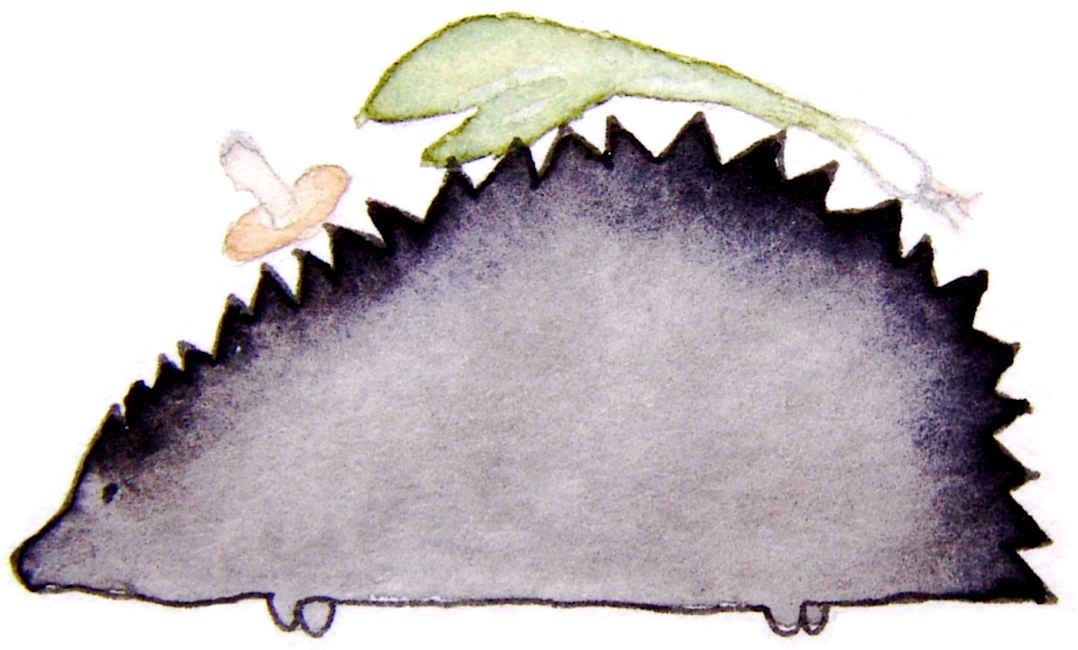In the share:
- Stinging nettles (Urtica dioica): A highly nutritious cooking green that loses its stinging quality when exposed to heat. Great in soup, steamed+sauteed, pestoed, or as a pizza topping. Recipes:
- Japanese Knotweed shoots (Fallopia japonica): Tender spring shoot (of a highly invasive plant) that tastes like mild rhubarb. Use it in any recipe that calls for rhubarb: compote, pie, syrup, pickles. Recipes:
- Wild Bee Balm (Monarda): Tasted like a spicier oregano. Use as a seasoning, fresh or dried, or grind up into extra potent pesto. Recipes:
- Field Garlic (Allium canadense): A year-round staple, field garlic is abundant in just about any local landscape. At this time of year, it's about to flower, producing a long, tender stem that's great for pesto, grilling, or pickling. Recipes:
- Chickweed (Stellaria media): A mild and buttery salad green. Best eaten raw. Recipes:
- Pine cones and conifer tips. A Vitamin C packed snack, spring conifer growth makes great pesto, sandwich or salad additions, decadent grilled treat, tart tea, or a citrusy note sprinkled on desserts. Recipes:
- Collection of recipes
- Conifer tip syrup
- Spruce ice cream
- Lemony Pilaf and more
- Forager Pascal Baudar explains how to use green pine cones as a natural wild yeast starter. On his Facebook (May 12th post) and in his beautiful book
- Pineapple Weed (Matricaria discoidea)- like a more aromatic version of chamomile, Pineapple Weed makes great tea, fresh or dried, sweet infusions, or even cut up fine in a salad.
- Basswood (Tilia) leaves are the young leaves of the basswood or linden tree, and one of the finest wild leaves for eating raw in spring. They taste like a nuttier spinach and make an excellent salad base. They can also be cooked, especially as they get bigger and tougher later in the season.
- Wild Mustard shoots (Tower rockcress). The mustard family has many varieties, both cultivated and uncultivated. Tower rockcress is bitter and spicy, like its cultivated relative, broccoli raab. The stem tops and flowers/buds are great as a fried green (because heat will burn off some of the bitterness and reveal more good flavor).
- How to cook wild mustards (and a note on nutrition)
- Sauteed mustard greens
- Wild mustard soup
- Dame's Rocket flowers (Hesperis matronalis): This pretty, invasive, spicy flower makes a great salad addition.
- Garlic Mustard leaves (Alliaria petiolata): One of our areas most aggressive invasives also happens to taste great (it first crossed the seas for culinary reasons). The leaves included in this share are extra large and especially great for stuffing like grape leaves, but also throwing fresh into salads/soups for a mild horseradish-like kick. Recipes:
- Salsify (Tragopogon pratensis): Also known as Johnny-go-to-bed-at-noon (and oyster plant, and many other names) because Salsify's flowers only open in the morning, this lettuce relative is tasty from head to foot. Its famous for its edible root, but at this time of year, it also produces delicious greens. The flowers, stem, and flower buds taste like a winning combination of asparagus and lettuce and can be substituted for either vegetable. Online recipes for salsify foliage are impossible (for me) to find because its root takes the spotlight, but as a general guideline, use it like you would a shoot vegetable, for stir-fries, soups, salads, beans and greens, roasting, grilling, and snacking.

